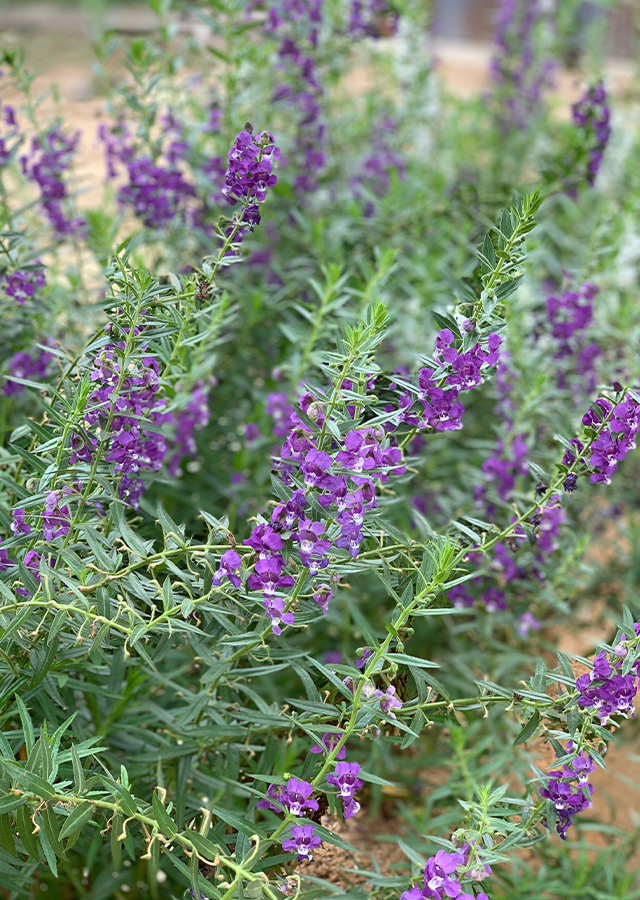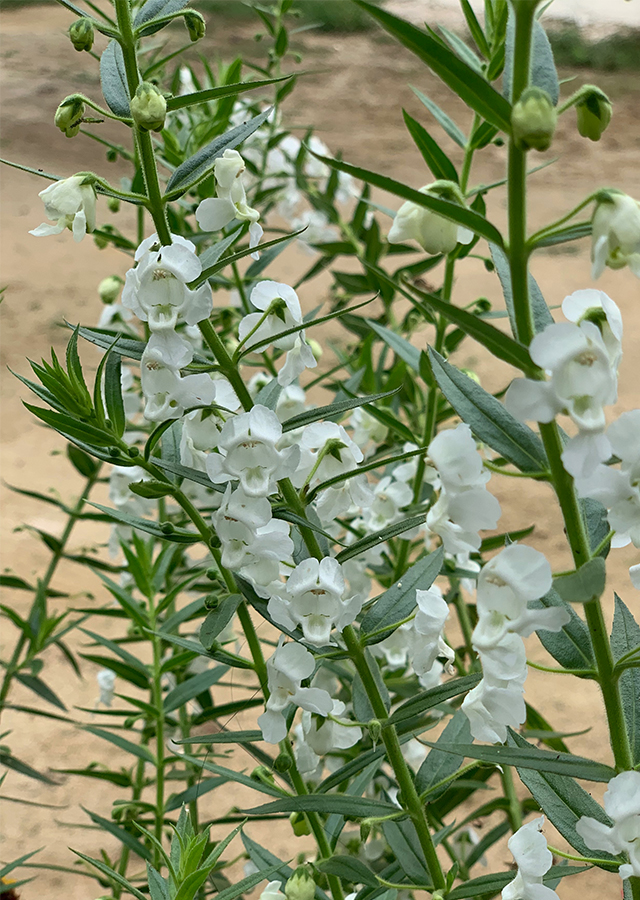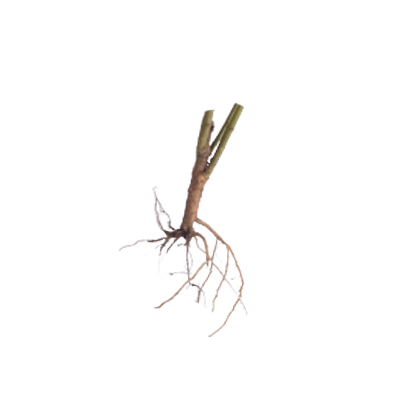Summer Snapdragon
Angelonia angustifolia Benth.
Plantaginaceae
Location in our garden
Principal



Synonym
-
Habitus
Herbaceous. A compact perennial with dense and showy spikes of flowers, growing upright about 25 - 30 cm.
Part Used
Leaves
Roots
Stem
Growing Requirements
Full Sunshine
Habitat
Terrestrial
Overview
Native to Mexico, Guatemala, Cuba and was introduced in Ecuador, Fiji, Gilbert Islands, New Caledonia, Niue, Samoa, Trinidad-Tobago. The use of the angelonia plant is documented as an anti-inflammatory drug by indigenous cultures in Latin America. The plant is cultivated as an annual ornamental plant which is widely available.
Vernacular Names
No found data on this. Need further research.
Agroecology
The angelonia plant is found in its natural habitat in Mexico at 0-2,000 m asl and grows best in moist but well-drained soil and in full sun. Prefers fertile loam soil at a soil pH of 5.5 - 6.2.
Morphology
- Roots - taproot.
- Stems - smooth, much branched from the base of the stem.
- Leaves - linear-shaped with pinnate venation and serrated margin.
- Flowers - dark rose with a hint of violet or purple, 5-petalled, slightly fragrant, fused at the base forming a throat. The throat of the flower shows tiny dots of purple. The flowers are borne on a terminal raceme, measuring around 12 cm long.
- Fruits - sub-globose brown capsule.
- Seeds - small.
Cultivation
Propagated by seeds and stem cuttings.
Chemical Constituents
Lupeol, phenol, alkaloid, tannin, flavonoid, saponin, steroid.
Traditional Medicinal Uses
The plant is considered as anti-inflammatory, analgesic, and antihyperlipidemic activities.
Part Used
Reference Sources
- National Park. Angelonia angustifolia Benth. https://www.nparks.gov.sg/florafaunaweb/flora/1/6/1666. 18-11-21.
- Royal Botanical Gardens. 2017. Plants of the World Online: Angelonia angustifolia Benth. http://www.plantsoftheworldonline.org/taxon/urn:lsid:ipni.org:names:798919-1. 18-11-21.
- D. Stephen T, et. 2014. National Library of Madacine: Chemical investigation of the medicinal and ornamental plant Angelonia angustifolia Benth. reveals therapeutic quantities of lupeol. https://pubmed.ncbi.nlm.nih.gov/25111011/. 18-11-21.


